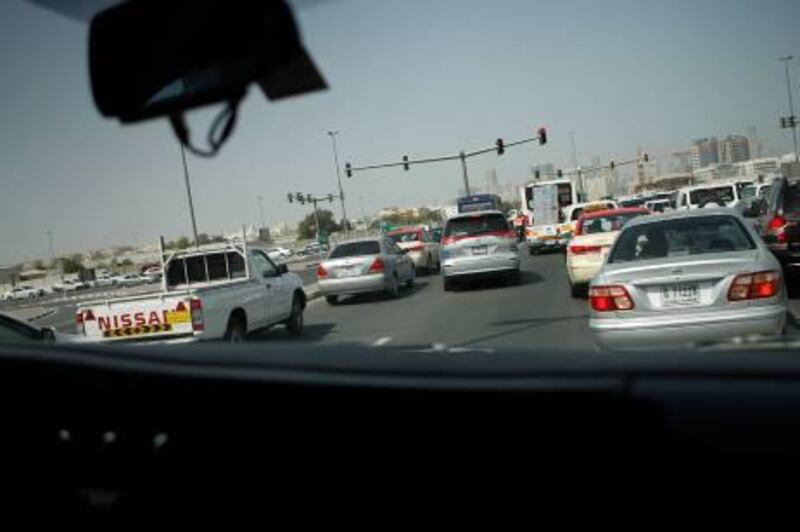DUBAI // With blazing lights and sirens blaring, the ambulance swerved between lanes at speeds of 100kph after responding to a call at the Al Muhaisana camp, where a patient suffering severe heart problems needed urgent help.
But as the ambulance wove through traffic and approached a red light, some drivers simply sat there, refusing to budge and blocking up traffic as the precious seconds ticked by.
The Dubai Corporation for Ambulance Services (DCAS) launched its "Give way to Ambulance" campaign last week in a bid to avert precisely this scenario.
"When an ambulance has its flashing lights on, it means it's on a mission to try and save a life," said Khalifa al Darrai, the executive director at DCAS.
"But many drivers refuse to give way, and put the life of the patient in danger."
After leaving the station at 11.58am, the ambulance arrived at the scene exactly seven minutes later, meeting the DCAS's optimal eight minute response time frame with vital seconds to spare.
However, the patient was already having a seizure, making the medics' task all the harder. But within minutes, the patient was on his way to Dubai Hospital.
While the strategic location of ambulance stations have made the company's quick response time possible, delays in traffic can still cost ambulances more than 12 additional minutes.
Officials said that irresponsible drivers endanger the lives of those needing immediate medical attention, particularly in life- threatening cases such as heart attacks.
According to the American Heart Association, a victim's chances of survival after cardiac arrest are reduced by seven to 10 per cent with every minute that passes without treatment.
Cardiopulmonary resuscitation (CPR) can triple a cardiac arrest victim's chances of survival, but few attempts succeed after 10 minutes.
This is just one example how drivers can put patients at risk.
The patchiness in awareness in the UAE is the main contributing factor for the failure to give way to emergency vehicles, Mr Darrai said.
"We have over 200 different cultures here with different education levels," he said.
"If you go to Europe, for example, the moment drivers hear the sound of an ambulance they immediately move."
However, despite the challenges ambulance drivers face on the road, the DCAS attended to almost 60 per cent of their 76,000-plus cases last year in fewer than eight minutes.
This is in line with standards set in some of the busiest cities around the world. The New York City Fire Department, for example, has an average response time to attend to patients suffering from cardiac arrest, choking or life threatening medical emergencies of seven minutes and three seconds.
In London, 75 per cent of all category A (life-threatening) cases between August last year and January this year were attended to within eight minutes.
Ninety-five per cent of category B (serious) cases were attended to within 19 minutes, according to the London Ambulance Service.
Abu Dhabi officials said they are working towards similar targets.
"Worldwide, there are varying standards applied to response time. There is no hard data about what is an ideal time. However, it is generally accepted that patients with critical injuries or illness need care at hospital as soon as possible," said Col Mohammed Abdullah al Nuaimi, the director of emergency management and public safety at Abu Dhabi Police. "This is one of our key goals. To achieve this, Abu Dhabi Police ambulance makes every effort to respond as quickly and as safely as possible and provide the best outcome for our patients."
The main challenges ambulances face on Dubai roads are drivers who do not give way, or who take advantage of the crisis by following the ambulances through traffic, officials said. While similar issues exist in Abu Dhabi, they are not as common, they say.
"There are many courteous and sensible drivers who are aware of the important and life-saving work that an ambulance does," said Col al Nuaimi.
"They are aware that time is life, and make every safe effort in assisting ambulances to navigate traffic.
"Unfortunately there are a few drivers who do not understand the importance of safe and quick transport for ambulance patients. We would urge these drivers to help us do our job better."






